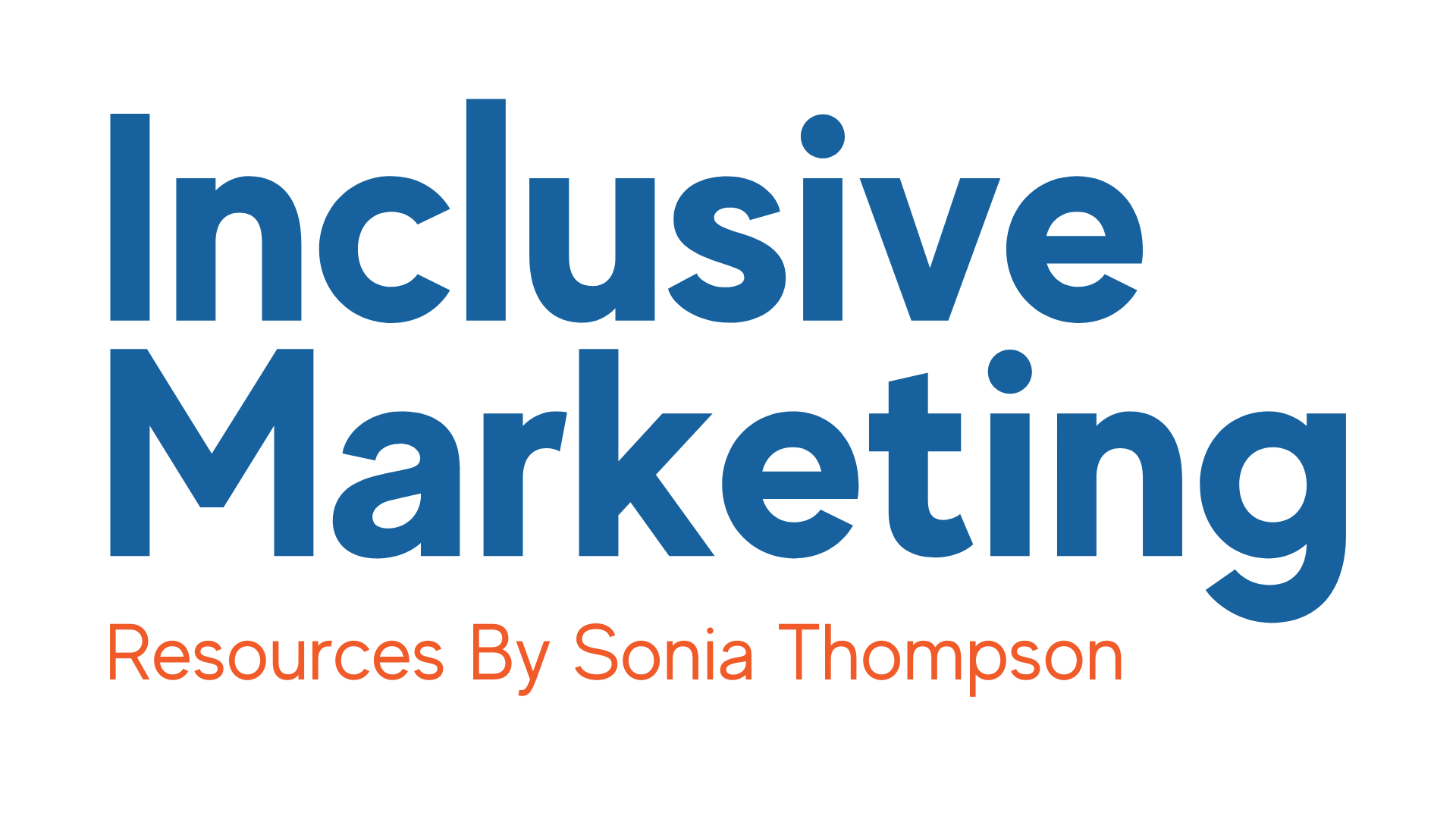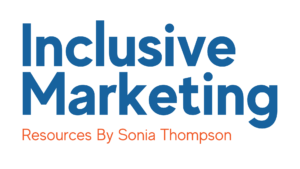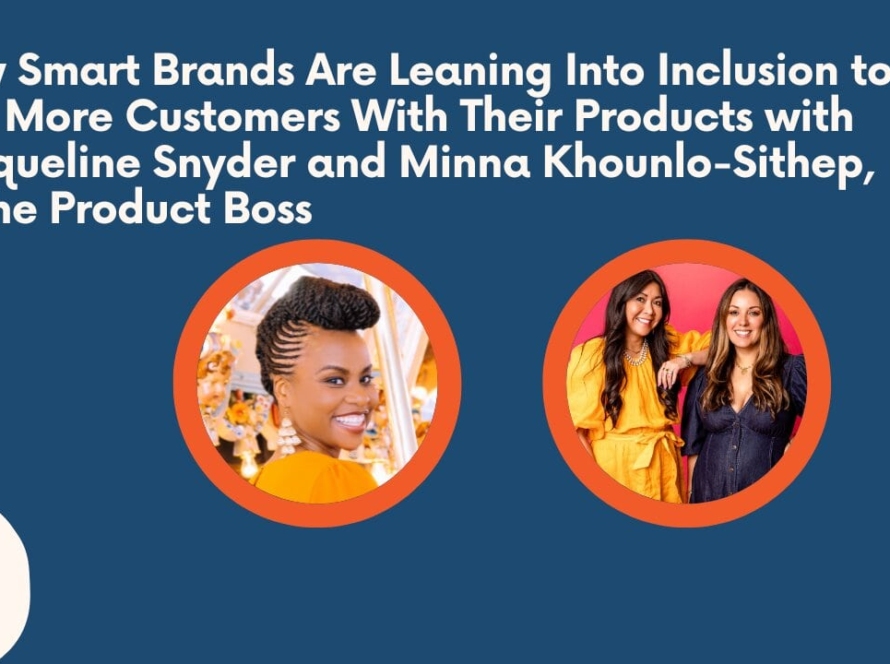Consumers have a lot of thoughts about brand inclusion, and specifically, how marketers can do better with it. I recently updated the Representation in Marketing research study, and once again, consumers did not hold back with their opinions.
Listen on Apple Podcasts | Spotify
I got feedback from more than 1000 consumers using Suzy’s consumer insights platform.
At the end of the survey, I asked 2 open-ended questions:
- What do you like and/or dislike about how brands engage in representation in marketing?
- What do you wish more brands knew about representation?
It shouldn’t come as a surprise, but some core themes emerged from what consumers had to say.
Here’s what you need to know.
Representation matters
Survey data showed that 76% of consumers say this is important to them.
The reasons given for why representation matters are both personal and broader on a macro level. Because representation is so importan to consumers, it is a critical component of brand inclusion. Here are some of their comments.
“That we feel that we are mostly ignored and that turns us off toward the brand.”
“I wish they knew that they are reinforcing stereotypes that young people are viewing and believing regarding “ideal” beauty.”
“Highlighting people from different cultural and religious backgrounds as well as people with disabilities can go a long way in destigmatizing groups that have long faced discrimination.”
“You cannot just market for one group and expect to be successful.”
“For most of my life I have gotten used to not seeing anyone who looked like me in the ads or commercials. But as I am aging, I realize that this lack of representation leads to self-hatred. I actually don’t find myself as worthy and think those who look like me are the problem. Logically I know that is not the case, but because for so long people like me were excluded, it has made me dislike brands in general.”
“It’s nice to see a representation of yourself because then you feel like they see you as a consumer.”
“I like it when brands have representations that match me. That makes me want to buy the product.”
“I like when I see someone like me because it makes me feel like the products are for me.”
“I’m a White heterosexual male. I don’t have to see myself in every commercial to see your product as something I might want or need.”
“I like when brands engage in representation in marketing when brands show people that look like me and that I can relate to.”
Brand inclusion will improve, when representation is more authentic
By far, this was the most prominent theme. Brand inclusion is on the rise, and consumers are happy about that. Representation in marketing is the primary way brands are engaging in inclusive marketing.
However, the overwhelming observation is that the representation is superficial and inauthentic, making it feel like the brands are just checking a box. Ouch.
“I would like them to be more realistic and not use so many stereotypes”
“Use older people in ads and not just for drugs and not just benign grandparents.”
“Their efforts come off as going through the motions.”
“They use millennial humor to promote stuff to gen z”
“I dislike brands that make my ethnicity so stereotypical and misrepresented”
“What I dislike is how superficial some of the marketing feels. I do not feel authenticity coming from a lot of marketing and it feels more like they picked a black girl, disabled person, or plus size women or men just to stick them in an ad and make it look good.”
“Don’t really like how inauthentic and performative the whole thing feels most of the time to me personally it feels like it just something checks off the box of things to do for the company rather it actually being about the groups of people that are being represented.”
“I feel like a lot of time they don’t consult with actual people from underrepresented groups to make sure their portrayals are accurate.”
“I wish brands would do the extra homework that is mandatory if you want to properly represent a group of people. Representation only works well when you actually have people that care about representation in the company.”
“Some brands seem to lump us altogether”
“I dont like when brands assume that all women in their mid 50s have ads targeting them for products like depends or other bladder control products,. And for like clothing, the younger women get all the cute clothes, show clothing brands for women in their 50s that are cute and comfortable.”
“What I dislike about how brands engage in representation in marketing is the stereotypical way they show how we Latinos are, as we always are dancing salsa and eating fajitas or tortillas.”
“I value brands that go beyond surface-level diversity and truly embrace different cultures, backgrounds, and perspectives in their campaigns. It’s refreshing when representation feels real and thoughtful. Conversely, I dislike when brands engage in “rainbow-washing” or “identity-washing,” where they superficially adopt diverse imagery without supporting those communities in substantive ways.”
“Also: use older people in ads and not just for drugs and not just benign grandparents.”
“I would like brands to understand that authentic representation is not just about numbers, but about showing real and diverse stories, reflecting people as they are in their day-to-day lives, not just as stereotypes.”
“Not all Black people like hip-hop or rap, they don’t all twerk, drink pounders, and aren’t all Democrats. Whites aren’t all Budweiser drinkers, and football watchers. Asians aren’t all techies and speak with an accent. Christians aren’t all MAGA Republicans. Seniors aren’t all thin and on Medicare and housebound.”
“I dislike how brands engage in representation in marketing trying to represent my culture in a incorrect way.”
“I wish that they knew that it is really offensive to a lot of different people when things are misrepresented and it is not only offensive to those they are misrepresenting.”
Consumers want you to expand the identities you focus on representing
Of course, focusing on brand inclusion doesn’t mean your brand needs to serve everyone. Inclusive marketing is about choosing, and each brand should choose which identities and communities it wants to serve. Resources are often a major driver of this decision.
It is beneficial to understand which identities and communities feel underrepresented in media and marketing.
Remember, all representation you engage in doesn’t always need to be a strategic decision. Be intentional with your brand’s visual imagery. More people feel seen as a result.
“It would be nice to have some representation of short people.”
“That Plus size isn’t someone who is a size 12.”
“I feel like there isn’t enough representation of hispanic females who look like me with curly hair and a tan complexion.”
“Diversity isn’t just about race and gender: It encompasses various factors like age, sexual orientation, disability, and socio-economic status.”
“I would like to see more inclusion of obesity and different races in marketing.”
“I think there are some groups that get more attention than other groups when it comes to inclusion. I think groups that have historically been discriminated against are more often targeted to be represented by marketing groups. But I think groups like the elderly, single people, etc aren’t represented as much as they should be.”
“It’s more than my hair or skin that’s different. We are more diverse than just looks.”
“Poor, white, old people still exist.”
“Most brands seem to cater to younger people. I’m in my mid-50’s, which seems to be a demographic that is somewhat forgotten for many brands.”
“Older and fatter and queer people exist.”
“More visibility to mental health issues and disabilities or conditions such as dyslexia or ADHD.”
“It is more than just gender or skin color.”
True brand inclusion goes beyond just putting people in ads
Like in the 2021 Representation in Marketing study, consumers want brands to know that authentic representation, which makes them feel like they belong with a brand, goes beyond just communications and promotional campaigns.
“That just because you represent someone in your advertising, we’re not necessarily going to flock to your product. Especially if it’s just a token effort during Pride month, Black History Month, etc.”
“I wish brands knew that only temporarily showing support for minorities feels very half-hearted, and like we are being used for profit. We would also prefer that any marketing DIRECTLY towards us, especially during times like Pride month or Black History month, is accompanied with some sort of activism or charitable donation.”
“Diversity and inclusion should not just be part of an advertising campaign, but reflected in all aspects of your business.”
“Representation is most authentic when those behind the scenes are just as diverse as those publicly representing the brand. A straight, cisgender white man is simply not going to write an inclusive ad campaign the same way a team of racially diverse, gender diverse, and queer advertisers will.”
“What I would like brands to know is Internal Education, as it is essential for brands to educate their teams on how they can contribute to a more inclusive business culture.”
“I would like brands to know that authentic representation goes beyond simply including diverse images. They must commit to inclusion in their organizational culture, listen to the communities they represent, and avoid superficiality.”
“I wish brands would do a better job internally hiring people of all backgrounds, ages, genders, etc., as well as representing them in the media.”
Bottom line: Focus on continuous improvement. Representation in marketing is essential.
But not all representation is considered equal.
And representation not done well can actually do more harm to your brand than good.
It’s Time To Focus More On Authentic Brand Inclusion
Take to heart what consumers want and need from you. And then work to ensure the representation your brand engages in hits the mark with the people you’ve chosen to serve.
If you’re not sure how well you’re brand is performing from a representation standpoint, let’s chat. Representation is one of the four dimensions evaluated as part of my inclusive brand audits.
Transcripts
Get the episode transcript here




